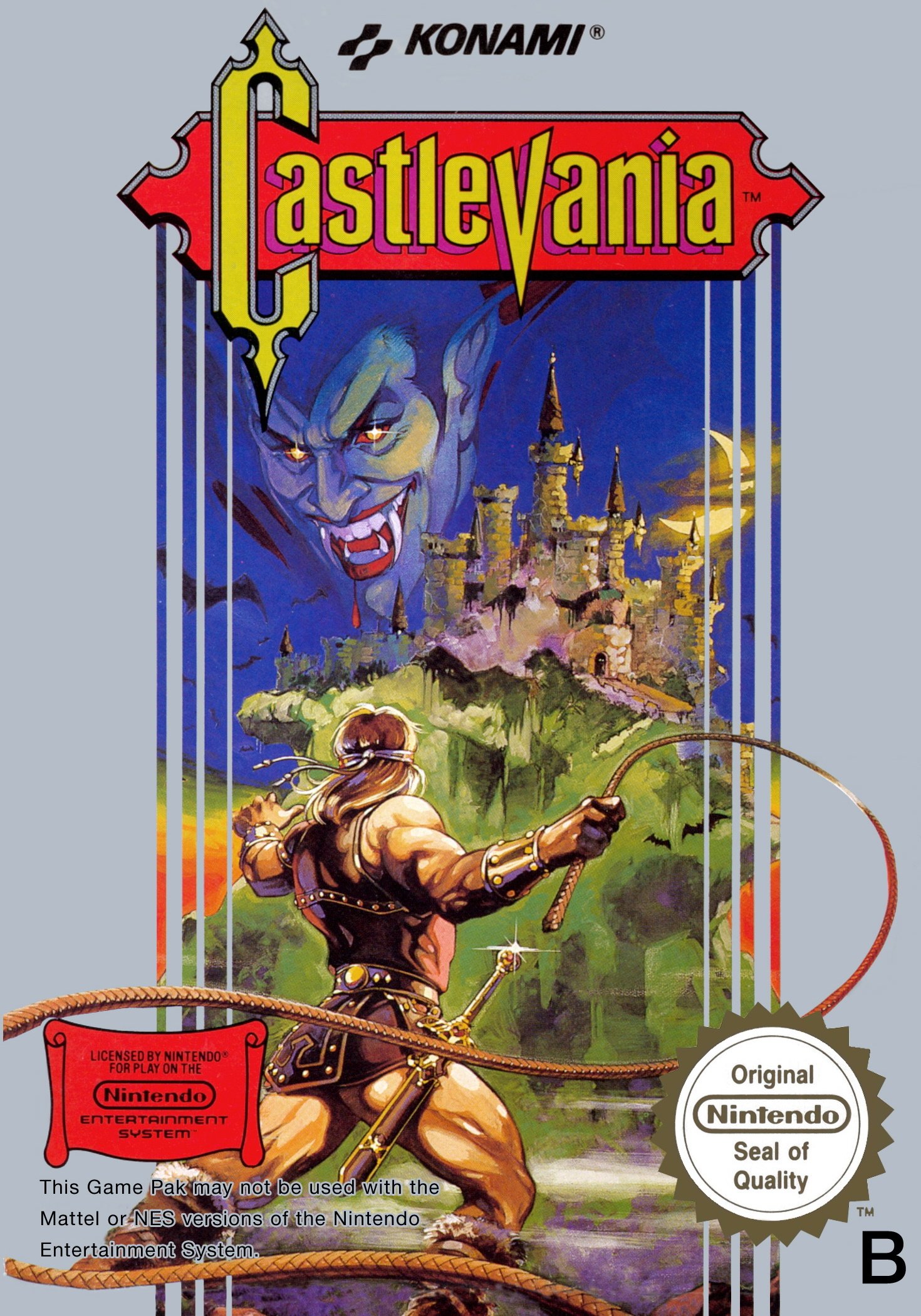
CASTLEVANIA
Castlevania, released for the NES in 1986 by Konami, stands as a timeless masterpiece of artistic expression within the constraints of 8-bit gaming. This side-scrolling action-platformer masterfully captures the gothic horror aesthetic, transforming each level into a visually rich and immersive experience that continues to captivate players decades later.
At the core of Castlevania’s artistic brilliance is its detailed sprite work and evocative character designs. The protagonist, Simon Belmont, is depicted with a striking silhouette, wielding his iconic whip with fluid and responsive animations that convey both strength and agility. The enemies, ranging from classic monsters like vampires and werewolves to grotesque creatures such as the infamous Medusa Heads, are meticulously crafted with distinct and menacing appearances. Each adversary is brought to life through expressive sprites that move smoothly across the screen, enhancing the sense of danger and urgency in every encounter.
The game’s environments are a testament to thoughtful and atmospheric design. Castlevania transports players through a variety of hauntingly beautiful locales, including eerie forests, dilapidated castles, shadowy dungeons, and foreboding crypts. Each stage is adorned with intricate background art that layers multiple elements to create depth and complexity. The use of a dark and muted color palette, punctuated by occasional bursts of red and gold, effectively sets a somber and suspenseful mood, perfectly aligning with the game’s horror theme. The backgrounds are rich with gothic architecture, cobwebbed corners, flickering torches, and ominous statues, all meticulously rendered to evoke a sense of dread and mystery.
Animation in Castlevania is another pillar of its artistic success. Despite the NES’s technical limitations, the game achieves remarkably smooth and responsive animations, from Simon’s whip strikes and jumps to the terrifying movements of his foes. The fluidity of these animations not only enhances gameplay but also reinforces the game’s immersive atmosphere, making each action sequence feel dynamic and impactful. The seamless transitions between different animations contribute to a cohesive and polished visual experience that keeps players engaged and invested in the game world.
Visual storytelling is intricately woven into Castlevania’s level design. Each environment is carefully crafted to tell its own story, whether it’s the oppressive darkness of Dracula’s castle or the eerie calm of an abandoned chapel. Environmental hazards, hidden passages, and atmospheric effects such as moving shadows and shifting light sources add layers of narrative depth without the need for explicit exposition. This subtle form of storytelling invites players to explore and interpret the game’s world, enhancing the overall artistic experience.
The integration of sound and visuals further elevates Castlevania’s artistic impact. The haunting soundtrack, composed by Kinuyo Yamashita, features melodic and eerie tunes that perfectly complement the game’s dark and mysterious settings. Sound effects, from the crack of Simon’s whip to the growls of his enemies, are crisp and well-timed, enhancing the sensory immersion and reinforcing the game’s atmospheric tension.
In conclusion, Castlevania on the NES is a shining example of how artistic vision and technical skill can combine to create a memorable and visually stunning game. Its detailed sprite work, atmospheric environments, smooth animations, and cohesive visual storytelling transform it into a work of art that transcends its 8-bit origins. Castlevania not only offers engaging and challenging gameplay but also stands as a testament to the artistic potential of early video games, making it a beloved classic that continues to inspire and impress players and creators alike.

